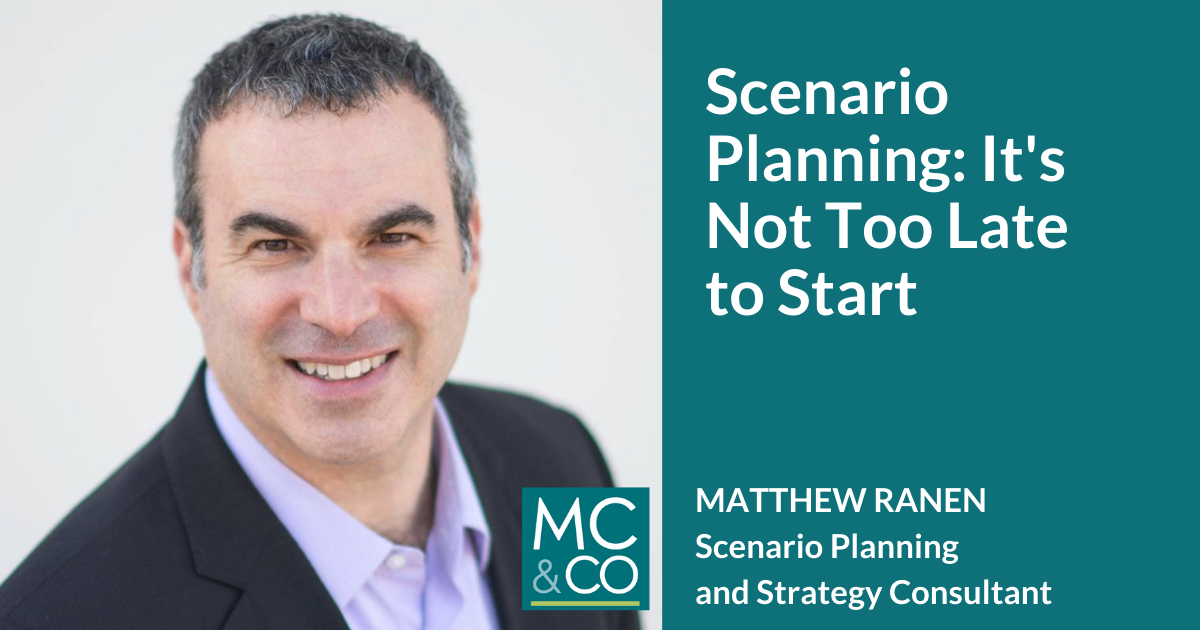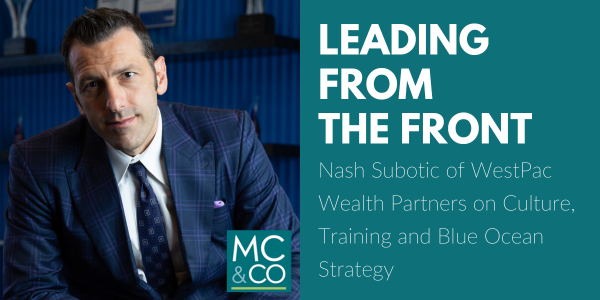
3 Common Scenario Planning Questions
“The true test of leadership is how well you function in a crisis.” Brian Tracy
In an increasingly uncertain world of work, one thing we can celebrate is the end of the phrase – “We’ve always done it that way”. From day one of this pandemic, leaders who focused themselves and their teams on “What can we do now?” have been leading the way towards a positive current and future recovery. Those who did any type of scenario planning were positioned to pivot quickly and identify opportunities in a world that no longer behaves by the past rules.
Are you behind in scenario planning? If so, it’s not too late to start.
Listen to the podcast:
Podcast: Play in new window | Download (Duration: 19:30 — 14.7MB)
Subscribe or Follow RSS
We asked Matt Ranen, a veteran Scenario and Strategic Planner, to share some of his vast experience about scenario planning and its processes as well as success stories of companies that implemented their scenario plan during all stages of the global pandemic. Matt’s expertise comes from his work as a leader at Global Business Network (GBN), the pioneering scenario consultancy that helped elevate the field of scenario planning worldwide. During his time there, Mr. Ranen designed and led customized client engagements across a range of industries, globally, and served as an instructor in scenario planning methodology for both public and private courses. While at GBN, he developed new elements of the scenario methodology to connect it to strategy, innovation, and risk management decision tools. Matt answers the three most common questions executives have about scenario planning.
- What is the biggest misconception leaders have about scenario planning vs. the value that it delivers?
Surprisingly, leaders think that scenario planning may provide certainty. That is not the objective – it’s a process that reduces uncertainty. It’s a process that allows you to prepare to be more agile, and it gives you the confidence to act when otherwise you may be paralyzed. Scenario planning forces executives to think bigger and more strategically inside all of the scenarios. It also enables you to have discussions about near term and long term strategies, which may reveal weaknesses in what may seem like a sure plan. It helps you answer the question of how you are going to sustain value in the long term.
2. How Does Scenario Planning Work?
There are 5 key phases:
- Orient – Know what you want to study. What should be getting your attention? Where are the opportunities or potential Industry and company disruptors?
- Explore – seek out alternate perspectives, consider ideas that you might have overlooked. Hire scenario planning experts who will introduce you to alternative ways of thinking, different worldviews, and “wild ideas”. Consider them all.
- Synthesize – Take the information and create distinct scenarios about the future. Lean into those scenarios and plan tentative options around each of those futures.
- Choose/Act – The hardest part is deciding where you are going to lean into – where you will make a core bet and how it will enable you to pivot into the future.
- Monitor – The fifth phase is to continue to create scenarios after the initial work is done to add long term value. Every six months revisit the plan, make adjustments, and invite a wide range of people to work on that project.
3. What are examples of how scenario planning allows leaders to pivot to a positive outcome during a crisis?
I have a client in the apparel industry, and by working together, we identified the necessity to transition to digitalization. Because we had been working on that before the pandemic, they were not hesitant to close retail brick and mortar stores to stem the bleeding. They didn’t have to ask themselves, “Are we sure?” they just pulled the trigger.
Salesforce is another great example. Initially they preemptively did scenario planning regarding regulations around data and the impact it will have on their business. More recently they have produced Scenario planning material around how the pandemic will impact the economy long term.
Regardless of where you are in your Scenario planning a regular part of your bi-annual business planning. Click here to download a Scenarios and Strategy case study example. You’ll be giving your team the tools to plan for long term value, plus readiness to successfully pivot during disruptions.






